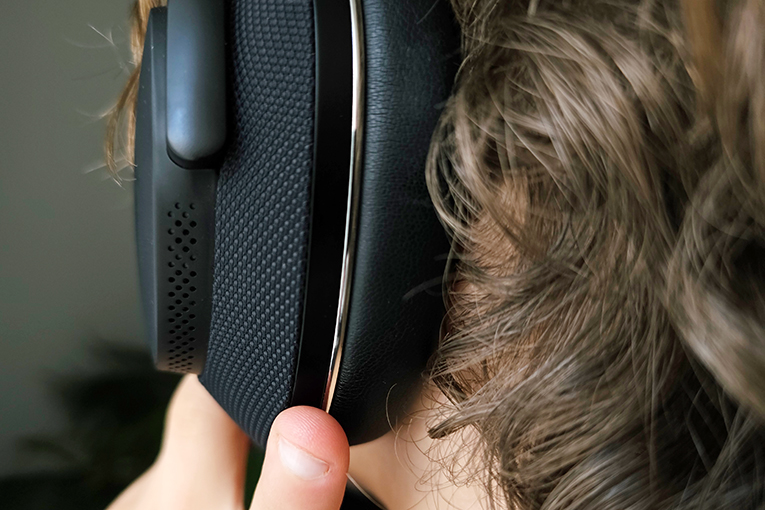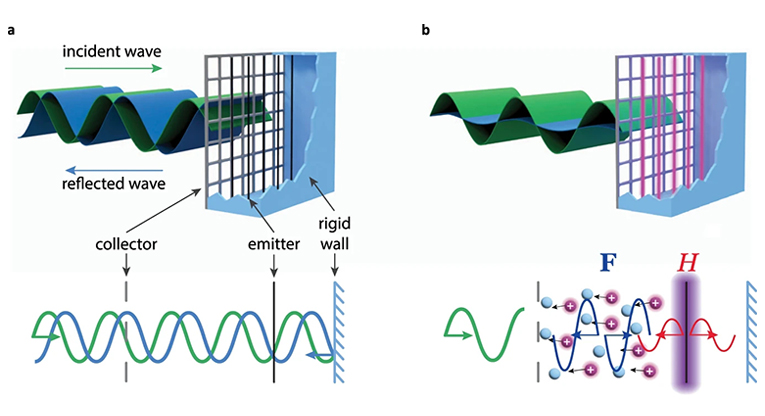Noise canceling is kinda magic. Not literal magic—it’s just physics and electronic shenanigans, but the effect is magic. Being able to put something in or over your ears and have the world get significantly quieter? That’s brilliant. Unfortunately, as good as noise canceling has gotten, it’s still not perfect. “Canceling” is a bit of an oversell. In reality, “noise attenuation” or “noise reduction” would be more accurate. “Some stuff gets a little quieter” is even more descriptive, if less pithy.

More and more headphones have noise canceling, and some budget models give the long-established kings in the space (Bose and Sony) a run for their money. It’s a moving target, though, as every few years the amount of noise reduced increases even more.
Earlier this year, Swiss researchers seemed to achieve the impossible: actual noise canceling. Not just that, but noise canceling over an unimaginably wide range of frequencies. Could future generations of noise-canceling headphones “create” perfect silence? Maybe.
What is noise canceling?
There are two basic ways to “cancel” sound: passive and active. Passive noise reduction includes earplugs, those big industrial earmuffs, and so on. Essentially, it’s some sort of physical barrier between the sound and your eardrums. Room treatments fall into this category as well. Sound-absorbing panels and sound-deadening materials do their best to keep sound waves from either bouncing around a room or passing through walls to another space. What makes this even more difficult is that normal materials can absorb only certain wavelengths of sound (the “normal” in that statement being a bit of foreshadowing).
Active noise canceling, like what you find in many earphones and headphones, is different. Picture the waves on the ocean. There are peaks and there are troughs. If you were able to “add” a peak where there’s a trough, and vice versa, you’d have flat water, right? That’s the idea behind active noise canceling. Microphones on the earpieces listen to the ambient sound, and then processors create the “opposite” of that sound. This is played back by the drivers like any other kind of audio. The ambient sound and this created sound cancel each other out. That’s the theory, anyway.

Headphone manufacturers have gotten pretty good at this. Some have gotten really good at it. Canceling low-frequency sounds is relatively simple, but it becomes more difficult to cancel sound as the frequency goes up. Very few can manage anything close to 1kHz, and none do anything at 10 or 20kHz. Any reduction of sound at those frequencies only happens because the headphones themselves are physically (i.e., passively) blocking those frequencies from getting to your eardrums.
This all might change soon, however.
Plasmacoustic metalayers
Normal acoustic treatments are ineffective at lower frequencies, and absorbing a wide range of higher frequencies is challenging in its own right. If you’ve ever seen the inside of an anechoic chamber, you know how complex they are to be so quiet.
To oversimplify, the Swiss researchers seem to have discovered a way for thin layers of plasma to work as a sort of “perfect” active noise canceling. The technology is effective not just for low frequencies, but for the whole range of human hearing.

This “magic” works thanks to “plasmacoustic metalayers.” While that term sounds like equal parts of sci-fi and scam, the idea is surprisingly simple to describe: Essentially, the air itself is manipulated using plasma. As the compressions and rarefactions that comprise a sound try to pass through this layer, they’re nullified.
If you want to learn more, you can read the paper “Ultrabroadband sound control with deep-subwavelength plasmacoustic metalayers” in Nature.
The future?
Obviously, this is a long way from becoming an actual product. But the prospects are tantalizing. Even if these metalayers were on every wall, there would still be issues with sound leaking into a room from the edges and corners. Even so, the possibility of smaller anechoic chambers would be very useful. Even further into the future, an earbud that seals against your ear, with plasmacoustic metalayers inside, perhaps instead of or in addition to traditional drivers, has the potential to create a remarkable silence. What that device wouild look like, how it’d be powered by a battery that fits in an earphone, and how safe a literal layer of plasma would be mere millimeters from your eardrum, are valid and impossible-to-answer questions. Right now, this is all more than theoretical but less than practical. However, it wasn’t long ago that Bluetooth, OLED, and high-resolution streaming music were theoretical but not practical. Could this be what’s next? We shall see.
. . . Geoffrey Morrison




